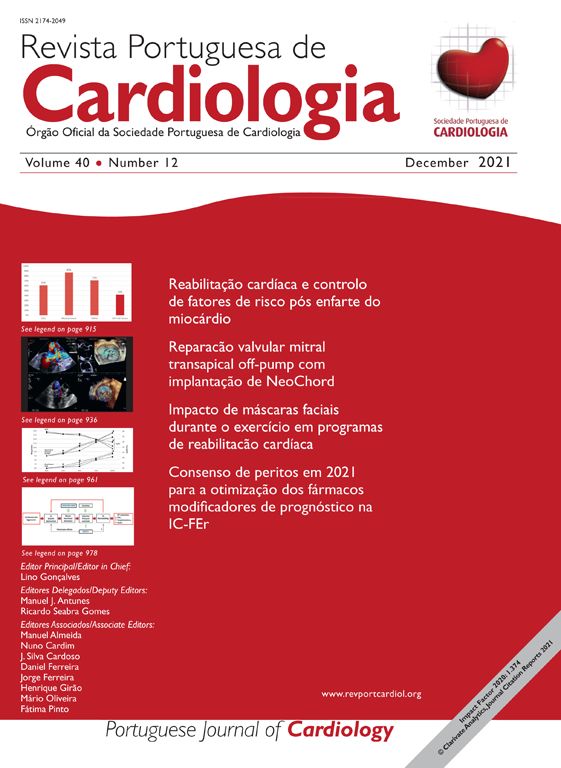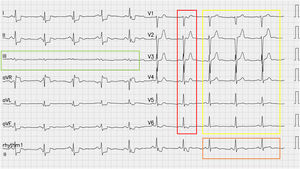A 21-year-old man presented to the emergency department due to oppressive chest pain. Physical examination and biochemical analyses were normal. During ongoing pain, an electrocardiogram was performed (Figure 1). With no further information, and after it was noted how electrical alterations had vanished from the seventh beat (Figure 1 – orange/yellow rectangles), the cardiologist stated there was no need for cath lab activation.
12-lead ECG with pain. Sinus rhythm with ST elevation in aVR and depression in the rest of limb leads. The green rectangle shows lead III without any alteration. Non-specific ST changes can be seen in the precordial leads, indicated by a red rectangle. It is likely that a spontaneous repositioning of the patient's wrist slightly reduced the radial artery-electrode (self-adhesive type electrode) contact with the consequent resolution of the artifact (yellow and orange rectangles). Digitize using PM Cardio.
The electromechanical association artifact (EMA), caused when the limb or precordial leads are placed near arterial pulsations, can simulate arrhythmias, electrolyte abnormalities, and acute myocardial infarction.1 The systolic arterial pulse can depict an abnormal ST segment timely synchronized with the underlying rhythm. Once it is assumed as real, it may induce erroneous clinical decisions such as performing a cardiac catheterization or even defibrillating an awake patient.
For a better understanding of EMA, some electrocardiography concepts need to be reviewed:
- •
When one of the limb electrodes is misplaced or affected by a source of disorder, it may distort the rest. In our case, since the right arm electrode was affected, leads recording the potential difference between limbs with the culprit arm electrode involved (I and II) show abnormal waves, while lead III remains unaffected (Figure 1 – green rectangle) as it is recording the potential difference between left arm and left leg.
- •
The only bipolar leads are I, II, and III and the rest, obtained from a negative pole (the Wilson central terminal, produced by connecting three limb electrodes through a resistive network to give an average potential across the body), are unipolar.2 Limb artifacts can therefore affect precordial leads as shown in Figure 1 – red rectangle.
The authors have no conflicts of interest to declare.







